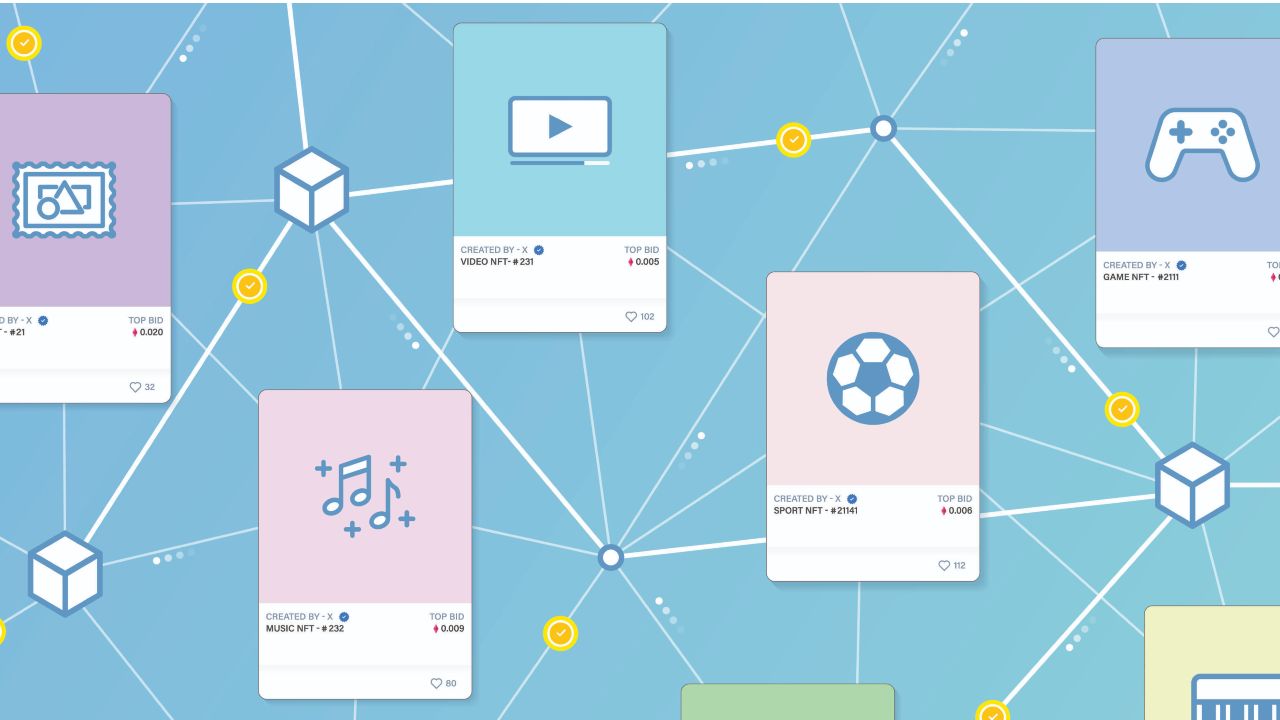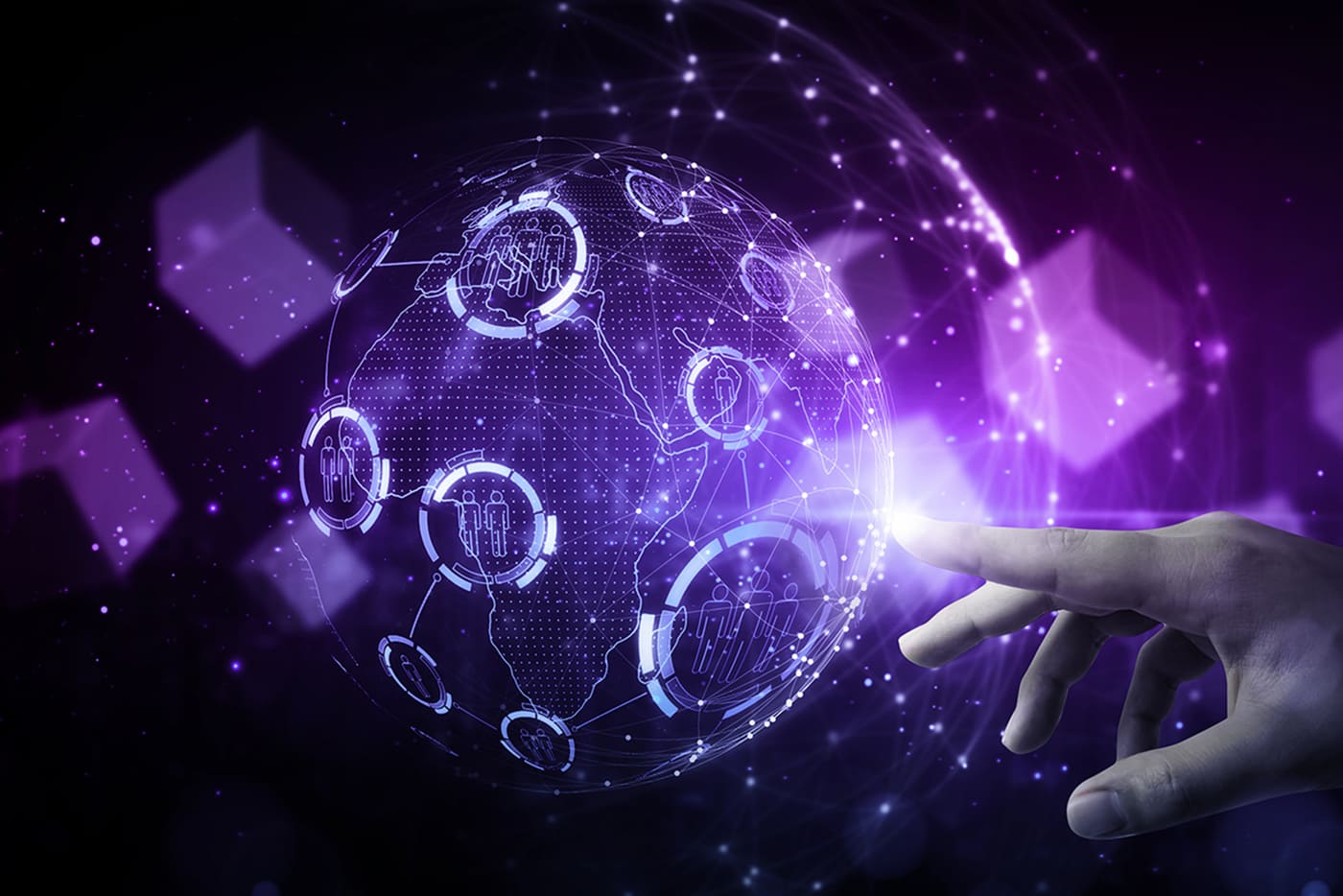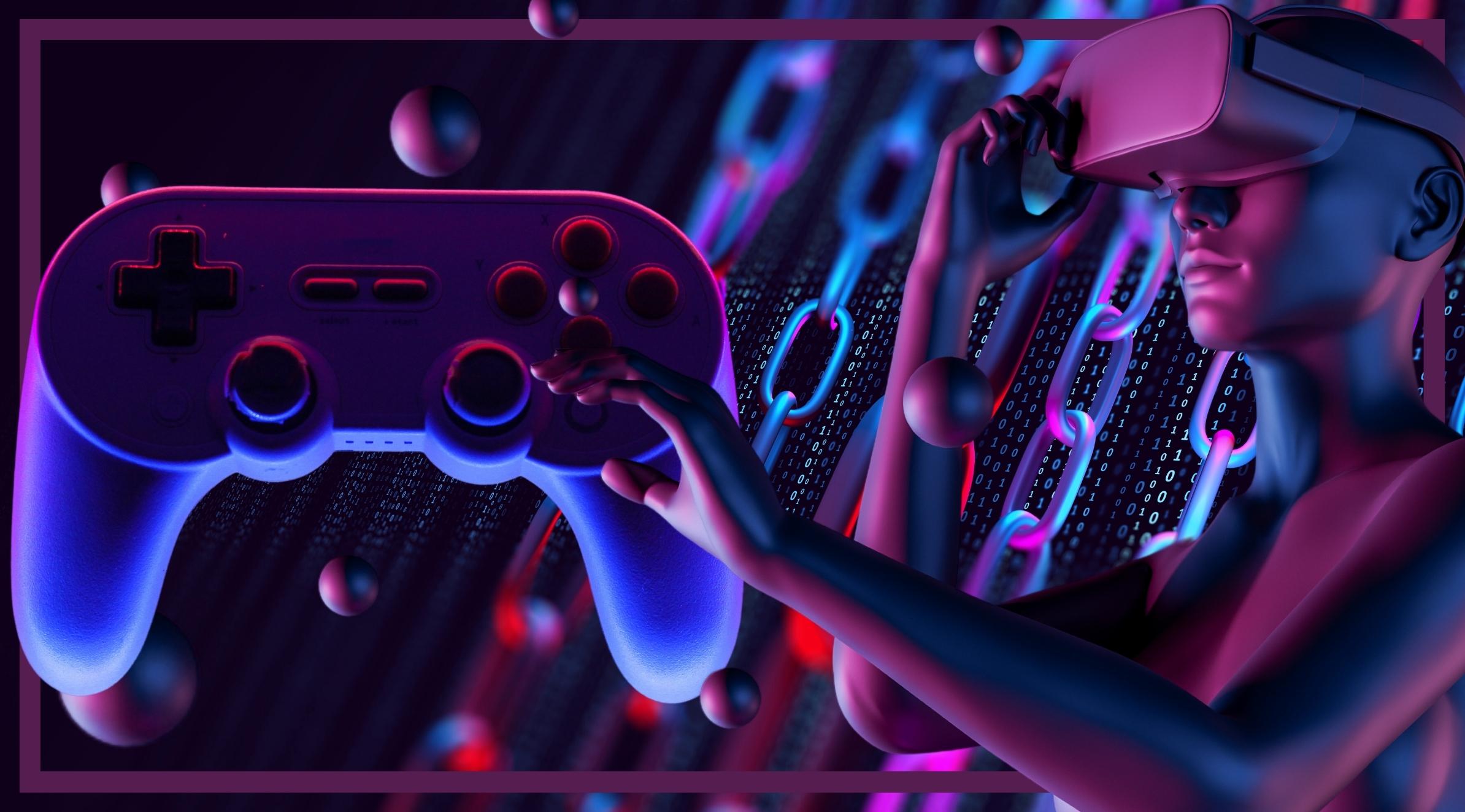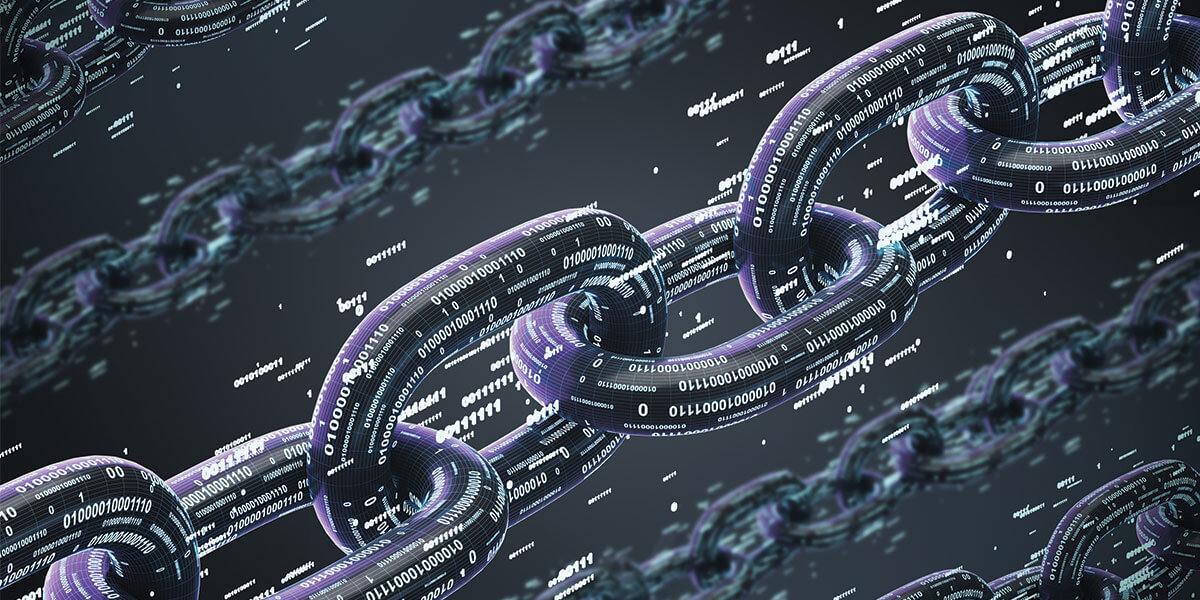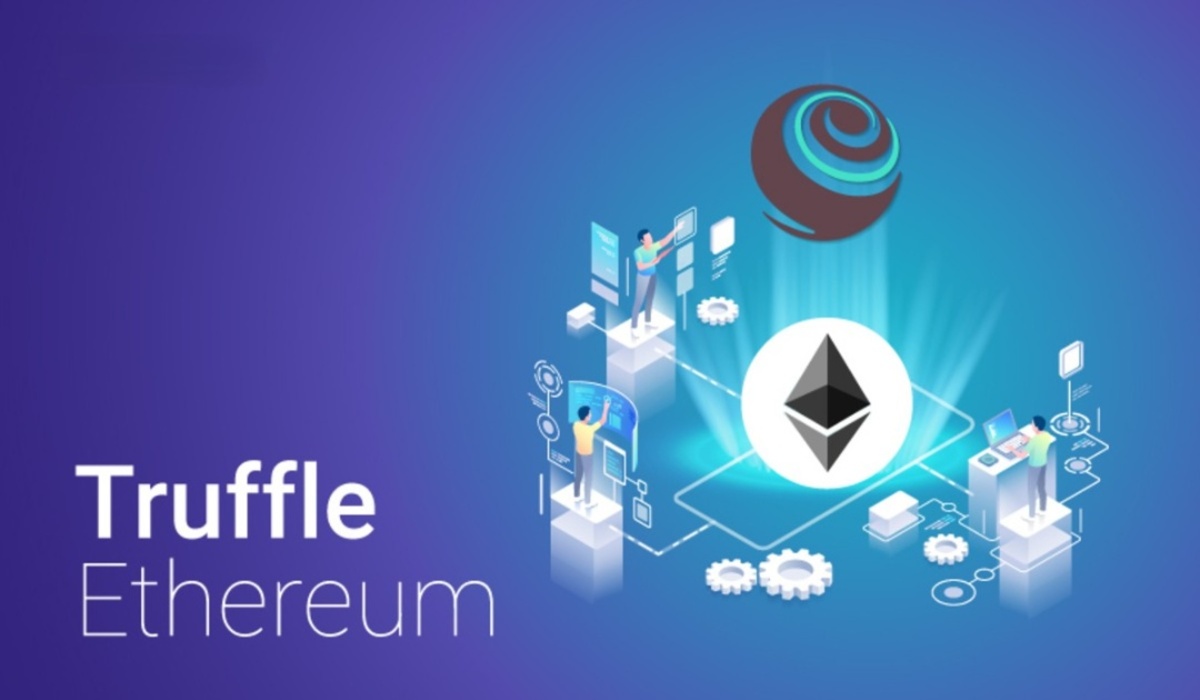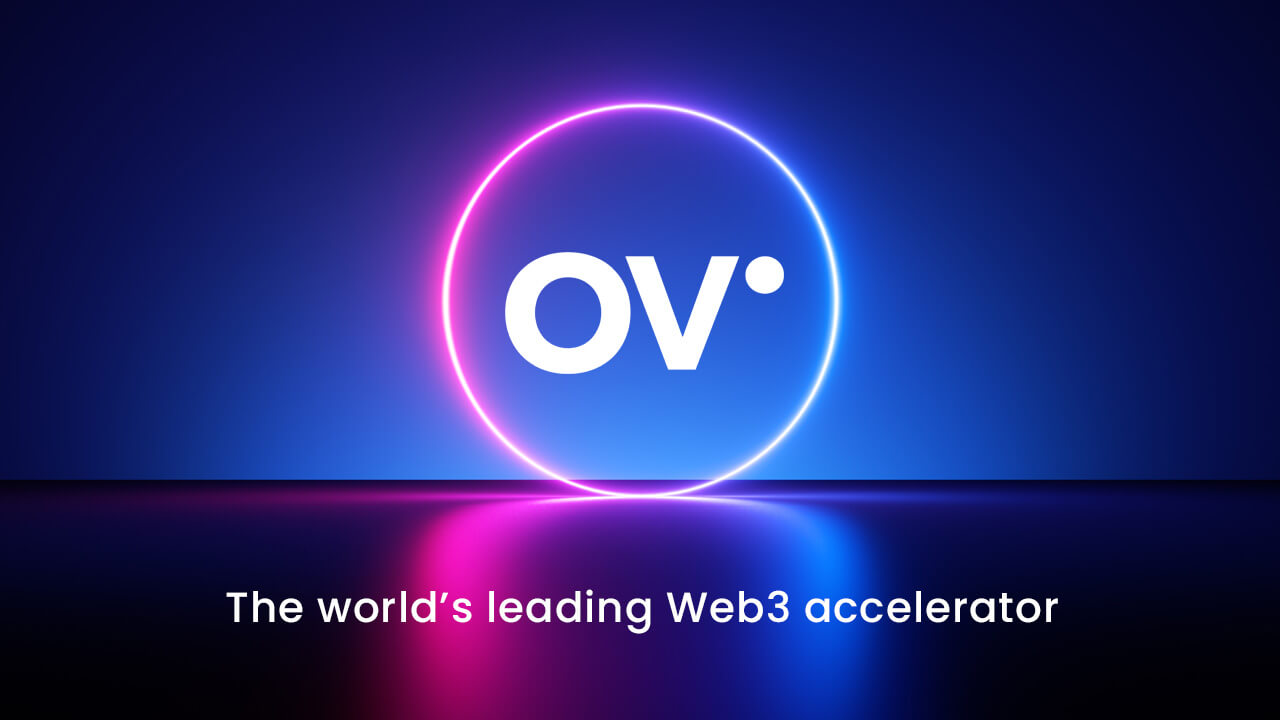Introduction
With the rapid evolution of technology, the internet has transformed countless aspects of our lives. One of the most significant advancements in recent years has been the emergence of Web3, a decentralized and user-centric version of the internet. It brings exciting new capabilities and possibilities that are poised to revolutionize various industries, including finance, healthcare, and entertainment.
Web3 is not just another iteration of the internet but represents a fundamental shift in the way we interact and transact online. It is built on blockchain technology, which enables secure and transparent transactions without the need for intermediaries. Unlike its predecessor Web2, which is controlled by a handful of centralized entities, Web3 is decentralized, giving users greater control over their data and online identities.
At its core, Web3 aims to empower individuals and encourage collaboration through open-source protocols, smart contracts, and decentralized applications (dApps). By leveraging the power of cryptography and peer-to-peer networks, Web3 allows for more trust, privacy, and ownership in the digital realm.
Web3 has gained significant attention as it addresses some of the inherent flaws and concerns associated with Web2. With Web2, user data is often exploited for commercial gain and subject to censorship, surveillance, and data breaches. Web3 seeks to address these issues by shifting control back to the users and providing greater security and privacy.
Furthermore, Web3 offers new opportunities for innovation and entrepreneurship. It enables the creation of decentralized applications that can reshape various industries and disrupt traditional business models. Through decentralized finance (DeFi), non-fungible tokens (NFTs), and other Web3 applications, users can participate in and benefit from a more inclusive and democratized digital economy.
In this article, we will explore what Web3 is, how it works, its key features, benefits, applications, and the challenges it faces. We will also discuss the future prospects of Web3 and its potential to reshape the internet as we know it.
What is Web3?
Web3, short for “Web 3.0,” is an evolving concept that represents the next phase of the internet. It encompasses a set of technologies and principles that aim to decentralize and democratize the online world. Unlike its predecessor, Web2, which relies on centralized platforms and intermediaries, Web3 offers a more open, secure, and user-centric approach.
At its core, Web3 is built on blockchain technology, the same underlying technology that powers cryptocurrencies like Bitcoin and Ethereum. Blockchain enables the creation of transparent, tamper-proof, and decentralized networks, where data and transactions are verified and recorded on a distributed ledger.
Web3 introduces the concept of “smart contracts,” which are self-executing contracts with predefined rules and conditions. These contracts are stored and executed on the blockchain, ensuring transparency, immutability, and automation. Smart contracts enable trustless interactions between parties, eliminating the need for intermediaries and reducing the risk of fraud.
One of the key features of Web3 is decentralization. Unlike Web2, where data and control are concentrated in the hands of a few centralized entities, Web3 aims to give individuals more control over their data and online identities. It shifts power from centralized platforms to the users themselves, creating a more democratic and user-centric internet.
Web3 also focuses on data privacy and security. With Web2, user data is often collected, stored, and monetized by platforms without the users’ explicit consent. Web3 aims to address these issues by using encryption, user-owned identity systems, and decentralized storage solutions. This ensures that users have greater control over their data and can choose who can access and use it.
Beyond decentralization and data privacy, Web3 introduces the concept of interoperability. This means that different blockchain networks and decentralized applications can communicate and interact with each other seamlessly. Interoperability enables the creation of a connected ecosystem of dApps, allowing users to leverage different services and functionalities across multiple platforms.
Overall, Web3 represents a paradigm shift in the way we think about the internet. It offers a more transparent, secure, and user-centric online experience. By leveraging blockchain technology and decentralization, Web3 is poised to disrupt traditional industries, empower individuals, and pave the way for a more inclusive and equitable digital future.
How does Web3 work?
Web3 operates through a combination of decentralized technologies, protocols, and standards that work together to create a more open and user-centric internet. These technologies include blockchain, smart contracts, decentralized identities, and decentralized storage solutions. Here’s a closer look at how these components come together:
Blockchain: At the heart of Web3 is blockchain technology. A blockchain is a distributed and immutable ledger that records transactions across a network of computers. It ensures transparency and security by verifying and storing transaction data in a decentralized manner. Blockchain technology provides the foundation for trustless and tamper-proof interactions on the Web3.
Smart contracts: Web3 utilizes smart contracts, which are self-executing contracts with predefined rules and conditions encoded on the blockchain. Smart contracts facilitate automated and secure transactions, eliminating the need for intermediaries. They enable trustless interactions between parties, ensuring that agreements are executed as intended.
Decentralized Identities: Web3 introduces the concept of decentralized identities, where users have control over their online identities and personal data. Decentralized identity systems use blockchain and cryptographic principles to create unique digital identities that are owned and controlled by users. This gives users the ability to manage their identity across different platforms and ensure their privacy and security.
Decentralized Storage: Web3 utilizes decentralized storage solutions to address the issue of data control and privacy. Instead of relying on centralized servers, decentralized storage platforms distribute and encrypt data across a network of computers. This ensures that users have ownership and control over their data, eliminating the risk of data breaches or unauthorized access by third parties.
Web3 also emphasizes the use of open-source protocols and standards that enable interoperability and collaboration among different applications and blockchain networks. Interoperability allows for seamless communication and interaction between various decentralized applications (dApps) and blockchain ecosystems. This means that users can leverage different services and functionalities across multiple platforms, enhancing the user experience and expanding the potential of Web3 applications.
In practical terms, Web3 applications are accessed through web browsers or specialized decentralized web browsers. These browsers connect to the decentralized networks, allowing users to interact with dApps and manage their digital assets securely. Users have control over their data, can initiate transactions, and can engage in various decentralized activities, such as lending, borrowing, trading, and more.
Overall, Web3 revolutionizes the way the internet works by decentralizing data, identities, and transactions. It prioritizes users’ privacy, security, and control over their online activities. By leveraging blockchain, smart contracts, decentralized identities, and storage solutions, Web3 creates a more transparent, secure, and user-centric environment for online interactions.
Key Features of Web3
Web3 introduces several key features that differentiate it from its predecessor, Web2, and pave the way for a more decentralized and user-centric internet. These features include:
Decentralization: Web3 is built on decentralized technologies like blockchain, allowing for a distributed network of computers to verify and record transactions. By removing the need for central authorities, Web3 enables greater transparency, security, and resilience.
Smart Contracts: Web3 utilizes smart contracts, which are self-executing contracts with predefined conditions that are automatically enforced. These contracts are stored on the blockchain, ensuring transparency and eliminating the need for intermediaries. Smart contracts enable trustless interactions and automate processes, making transactions more efficient and secure.
User Control and Ownership: In Web3, users have greater control over their data and digital assets. Through decentralized identity systems and secure storage solutions, users have ownership and control over their online identities and personal data. This shift in control enhances privacy and security while putting users in charge of their online interactions.
Interoperability: Web3 promotes interoperability among different blockchain networks and decentralized applications. It allows for seamless communication and transfer of data and value between different platforms. Interoperability fosters collaboration, expands the capabilities of dApps, and enhances the overall user experience.
Data Privacy: With Web3, data privacy takes center stage. Users have the ability to control who can access their data and how it can be used. Encryption and decentralized storage solutions ensure that user data remains secure and protected from unauthorized access. This focus on data privacy addresses the concerns associated with centralized platforms in Web2.
Open Source and Community Governance: Web3 embraces open-source protocols and community-driven governance models. This allows developers to contribute to the development of the Web3 ecosystem and ensures transparency and inclusiveness. Open-source projects and community-driven decision-making processes foster innovation, collaboration, and the democratization of technology.
Immutable Records: Transactions recorded on the blockchain in Web3 are immutable, meaning they cannot be altered or tampered with. This feature ensures transparency, trust, and auditability. Immutable records provide a higher level of security and integrity compared to traditional centralized systems.
Incentive Mechanisms: Web3 introduces incentive mechanisms, often facilitated by cryptocurrencies or tokens, to encourage participation and validate the network. Participants can be rewarded for contributing computing power, participating in validation processes, or providing services to the network. These incentive mechanisms create a self-sustaining ecosystem and incentivize users to actively engage in Web3 platforms.
Collectively, these key features of Web3 redefine the internet landscape by empowering users, promoting security and privacy, and fostering collaboration and innovation. Web3 represents a significant shift towards a more decentralized, inclusive, and user-centric internet.
Benefits and Advantages of Web3
Web3 brings numerous benefits and advantages that have the potential to transform various industries and revolutionize the way we interact online. Here are some of the key advantages of Web3:
Decentralization and Trust: One of the central advantages of Web3 is its decentralized nature. By removing the need for intermediaries and central authorities, Web3 increases transparency and reduces the risk of censorship and manipulation. Transactions conducted on Web3 are verified and recorded on the blockchain, providing a high level of trust and authenticity.
Data Privacy and Security: Web3 prioritizes the privacy and security of user data. Personal data is stored securely on decentralized networks, putting users in control of their data and protecting them from the risks of data breaches and unauthorized access. Encryption techniques and decentralized storage solutions ensure that data remains private and secure.
User Ownership and Control: Web3 empowers users by giving them ownership and control over their digital identities and assets. Users have the ability to manage their online identities and choose how their data is used. This shift in control enhances user autonomy and reduces the reliance on centralized platforms for managing personal information.
Greater Financial Inclusion: Web3 brings financial services and opportunities to individuals who may have been excluded from traditional financial systems. Decentralized finance (DeFi) applications built on Web3 allow individuals to access lending, borrowing, and investment services without the need for intermediaries. This can lead to increased financial inclusion and access to financial resources for underserved populations.
Improved Efficiency and Cost Savings: Through smart contracts and automation, Web3 streamlines processes and reduces the need for manual intervention. Transactions can be executed automatically based on pre-defined rules, eliminating the need for intermediaries and reducing costs. This increased efficiency can result in time and cost savings for businesses and individuals.
Innovation and Entrepreneurship: Web3 provides opportunities for innovation and entrepreneurship through decentralized applications (dApps) and open-source protocols. Developers can create dApps that leverage blockchain technology and smart contracts to create unique and innovative solutions. The openness and collaborative nature of Web3 encourage experimentation and foster a thriving ecosystem of developers and entrepreneurs.
Reduction of Middlemen and Counterparty Risks: Web3 eliminates the need for middlemen, such as banks or other intermediaries, in many transactions. This reduces counterparty risks and lowers the chances of fraud or disputes. By leveraging decentralized networks, Web3 enables direct peer-to-peer interactions, enhancing trust and efficiency in transactions.
Immutable and Auditability: Transactions recorded on the blockchain in Web3 are immutable, meaning they cannot be altered or tampered with. This provides a higher level of integrity and trust, as all transactions are verifiable and auditable. Immutable records enhance transparency and enable efficient auditing processes.
Overall, Web3 offers a range of benefits and advantages that promote trust, transparency, privacy, and innovation. It has the potential to reshape industries, democratize access to financial services, and empower individuals in the digital era.
Web3 Applications
Web3 applications, also known as decentralized applications or dApps, are one of the most exciting aspects of the Web3 movement. Built on blockchain technology and utilizing smart contracts, these applications offer innovative solutions across a variety of industries. Here are some notable examples of Web3 applications:
Decentralized Finance (DeFi): DeFi has emerged as one of the most prominent and transformative sectors within Web3. It enables traditional financial services to be decentralized and accessible to anyone with an internet connection. DeFi applications facilitate peer-to-peer lending, borrowing, trading, and yield farming, all without the need for intermediaries like banks. It offers users greater control over their funds, higher interest rates, and the potential for financial inclusion on a global scale.
Non-Fungible Tokens (NFTs): NFTs have gained significant traction in the Web3 space, revolutionizing the way we perceive digital art, collectibles, and intellectual property. NFTs are unique cryptographic tokens that represent ownership or proof of authenticity for digital assets. Artists, musicians, and content creators can mint and sell their work directly to consumers, eliminating the need for traditional intermediaries. NFTs also enable the creation of digital marketplaces where users can buy, sell, and trade unique digital assets.
Supply Chain Management: Blockchain-based supply chain solutions have the potential to increase transparency, traceability, and efficiency in global supply chains. Web3 enables the recording and verification of every step in a supply chain, reducing counterfeiting, ensuring ethical sourcing, and enhancing product authenticity. This can provide consumers and businesses with confidence in the origins and quality of the products they purchase.
Decentralized Social Media: Traditional social media platforms have faced criticism concerning data privacy, censorship, and control over user-generated content. Web3 offers an alternative by fostering decentralized social media platforms that prioritize user control, privacy, and freedom of expression. These platforms utilize blockchain and decentralized storage to enable users to have ownership and control over their data and content.
Gaming and Virtual Worlds: Web3 has opened up new possibilities for the gaming industry, allowing for the creation of decentralized gaming platforms and virtual worlds. Blockchain-based gaming platforms provide players with true ownership of in-game assets, enabling the buying, selling, and trading of virtual items. Virtual worlds built on Web3 allow for user-driven economies and collaboration, creating immersive and interactive experiences for gamers.
Internet of Things (IoT): Web3 can facilitate the development of more secure and efficient IoT networks. By leveraging blockchain technology, IoT devices can securely communicate and transact with each other, enabling a decentralized network of connected devices. This can enhance the security and privacy of IoT networks, reduce reliance on centralized platforms, and enable efficient device-to-device interactions.
Governance and Voting Systems: Web3 introduces the concept of decentralized governance, where decision-making processes are conducted through community consensus. Blockchain-based governance systems enable transparent and immutable voting mechanisms, ensuring the integrity and fairness of elections or decision-making processes. Such systems have the potential to enhance transparency and trust in various sectors, including governance, organizations, and even online communities.
These examples only scratch the surface of the wide range of applications that Web3 enables. As the technology continues to evolve, more innovative use cases will emerge, transforming industries and reshaping the way we interact and transact online.
Challenges and Limitations of Web3
While Web3 offers a promising future, it is important to acknowledge the challenges and limitations that need to be addressed for widespread adoption and success. Here are some key challenges associated with Web3:
Scalability: Scalability is a significant challenge for Web3 applications. Blockchain networks often struggle to handle large volumes of transactions, resulting in slow transaction times and high fees. As more users and applications join the network, scalability becomes crucial to ensuring a smooth and efficient user experience.
User Experience: The user experience of Web3 applications can be complex and daunting for mainstream adoption. Dealing with cryptographic keys, managing wallets, and interacting with decentralized platforms require technical knowledge that may be a barrier for entry for non-technical users. Improving the user experience and creating intuitive interfaces will be crucial to drive mass adoption of Web3.
Regulatory Uncertainty: The regulatory landscape for Web3 technologies and applications is still evolving. Uncertainty around regulations can create challenges for businesses and individuals looking to operate in the Web3 space. Clarity in regulations regarding cryptocurrencies, token offerings, and decentralized applications is necessary to foster innovation and provide a secure environment for participants.
Energy Consumption: Many blockchain networks, such as Bitcoin and Ethereum, consume significant amounts of energy, raising concerns about their environmental impact. The energy consumption of blockchain networks needs to be addressed to ensure a sustainable future for Web3. Efforts are underway to develop more energy-efficient consensus mechanisms and environmentally friendly blockchain alternatives.
Interoperability: While interoperability is a key feature of Web3, achieving seamless integration and communication between different blockchain networks and applications is still a challenge. Interoperability standards and protocols need to be established to ensure smooth interactions and enable the full potential of Web3 to be realized.
Security Concerns: Web3 applications are not impervious to security vulnerabilities. Smart contracts can be subject to coding errors or malicious attacks, resulting in significant financial losses. Auditing and enhancing the security of smart contracts and decentralized applications are paramount to protect user funds and maintain trust in the Web3 ecosystem.
Economic Inequality: While Web3 has the potential to democratize access to financial services and opportunities, economic inequality can still persist. Adoption and access to Web3 technologies may be limited by factors like internet accessibility, digital literacy, and wealth distribution. Bridging the digital divide and ensuring equal access and opportunities for all individuals will be crucial in realizing the true potential of Web3.
Education and Awareness: Web3 technologies and concepts are complex and still relatively unfamiliar to the general public. Educating the masses on the benefits, use cases, and risks associated with Web3 will be crucial for adoption and acceptance. Increasing awareness and promoting educational initiatives will help bridge the knowledge gap and reduce resistance to change.
Development and Infrastructure: Developing scalable and robust Web3 applications requires skilled developers and adequate infrastructure. The shortage of experienced Web3 developers and the need for reliable infrastructure can be an obstacle to the growth of the ecosystem. Investing in developer education and infrastructure development will be essential for the continued advancement of Web3 technologies.
Addressing these challenges and limitations will require collaboration between technologists, regulators, businesses, and communities. Overcoming these barriers will pave the way for a more inclusive, secure, and sustainable future for Web3.
Future of Web3
The future of Web3 holds tremendous potential to revolutionize how we interact, transact, and communicate online. As the technology continues to evolve and mature, several key trends and developments are shaping the future of Web3:
Mass Adoption: As Web3 technologies become more user-friendly and accessible, we can expect a wider adoption by mainstream users. Improved user interfaces, seamless integration with existing web infrastructure, and increased education and awareness will drive the adoption of Web3 applications beyond early adopters and tech-savvy individuals.
Interoperability: Interoperability will play a crucial role in the future of Web3. Efforts are underway to create standards and protocols that enable seamless communication and interaction between different blockchain networks and decentralized applications. This interoperability will create a connected ecosystem of dApps, enabling users to leverage the functionalities of various platforms and unlock new possibilities for innovation.
Scalability Solutions: Scalability remains a challenge for blockchain networks, hindering their ability to handle large transaction volumes. However, ongoing research and development are focused on overcoming this limitation. Solutions like layer-2 protocols, sharding, and advanced consensus mechanisms aim to improve scalability, enabling faster transactions, lower fees, and enhanced user experiences.
Evolving Governance Models: Web3 is challenging traditional governance models by introducing decentralized governance and decision-making mechanisms. The future of Web3 will see further experimentation with various governance models, empowering community participation and allowing stakeholders to have a say in the evolution of the platforms they use.
Integration with Emerging Technologies: Web3 will likely integrate with other emerging technologies, including artificial intelligence (AI), Internet of Things (IoT), and virtual reality (VR). Combining Web3 with these technologies has the potential to create even more powerful and immersive experiences, such as AI-driven decentralized applications or IoT devices interacting seamlessly with blockchain networks.
Institutional Adoption: As the benefits of Web3 become more apparent, we can expect increased adoption by institutions, including governments, corporations, and nonprofit organizations. Web3 technologies can enhance data security, transparency, and efficiency across various sectors, leading to increased trust and improved operational processes.
Sustainable and Green Solutions: Environmental concerns surrounding energy consumption in blockchain networks are being actively addressed. The future of Web3 will likely witness the development of more energy-efficient consensus mechanisms, the use of renewable energy sources, and the adoption of sustainability practices to ensure a greener and more sustainable Web3 ecosystem.
Hyper-personalization and Hyper-connectivity: Web3 has the potential to enable hyper-personalization, where users have greater control over their online experiences and data. Web3 applications can leverage user-owned data to deliver personalized products, services, and experiences. Additionally, Web3 can facilitate hyper-connectivity by allowing devices, applications, and data to interact seamlessly, enhancing collaboration and efficiency.
As technology progresses and stakeholders continue to foster innovation, the future of Web3 holds vast opportunities for disruption, empowerment, and collaboration. With ongoing enhancements in user experience, scalability, and infrastructure, Web3 is poised to transform industries, redefine online interactions, and shape the digital landscape for years to come.
Conclusion
Web3 represents a paradigm shift in the way we interact, transact, and communicate online. Built on blockchain technology and other decentralized principles, Web3 offers a more open, secure, and user-centric internet experience. Its key features, including decentralization, smart contracts, user control, and interoperability, bring forth numerous benefits and advantages that have the potential to transform industries and empower individuals.
While Web3 holds immense promise, it is not without its challenges. Scalability, user experience, regulatory uncertainty, and security concerns are some of the obstacles that must be overcome for widespread adoption. Efforts are underway to address these challenges, as technologists, regulators, and businesses collaborate to shape the future of Web3.
The future of Web3 is bright and transformative. We can anticipate the mass adoption of Web3 technologies as user interfaces become more intuitive and educational initiatives increase awareness. Interoperability will enable seamless integration between various blockchain networks and applications, fostering collaboration and innovation. Scalability solutions, improved governance models, and integration with emerging technologies will further enhance the capabilities of Web3.
As Web3 advances, it has the potential to democratize access to financial services, enhance data privacy and security, and redefine how we engage online. It offers a more inclusive, transparent, and equitable digital ecosystem where users have greater control over their data and online identities.
To fully realize the potential of Web3, continued education, research, and development are crucial. Developers, businesses, and individuals need to stay informed and adapt to the rapidly evolving landscape of Web3. With the right infrastructure, collaboration, and regulatory frameworks, Web3 can chart a path towards a more sustainable, equitable, and user-centric internet.







